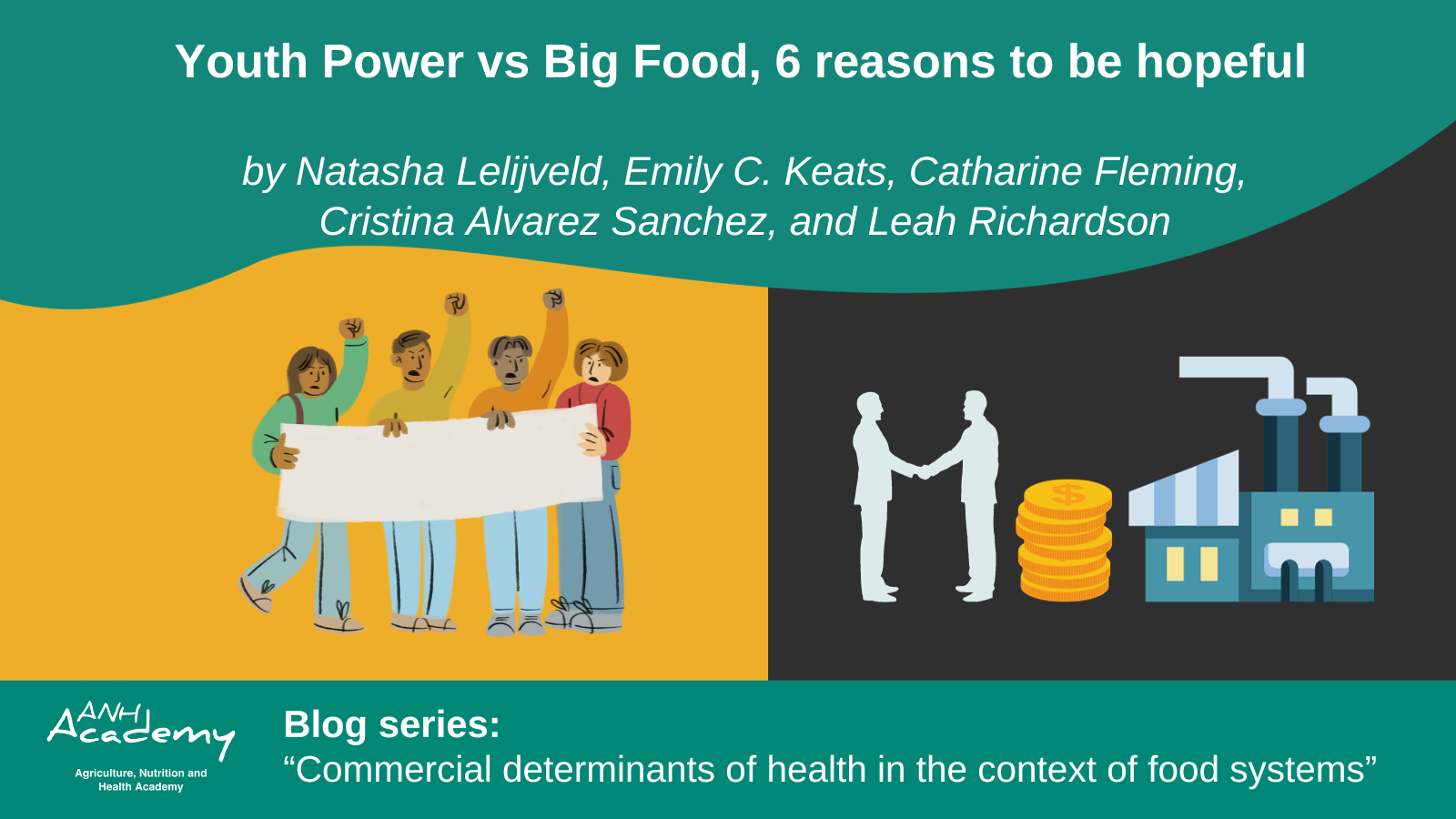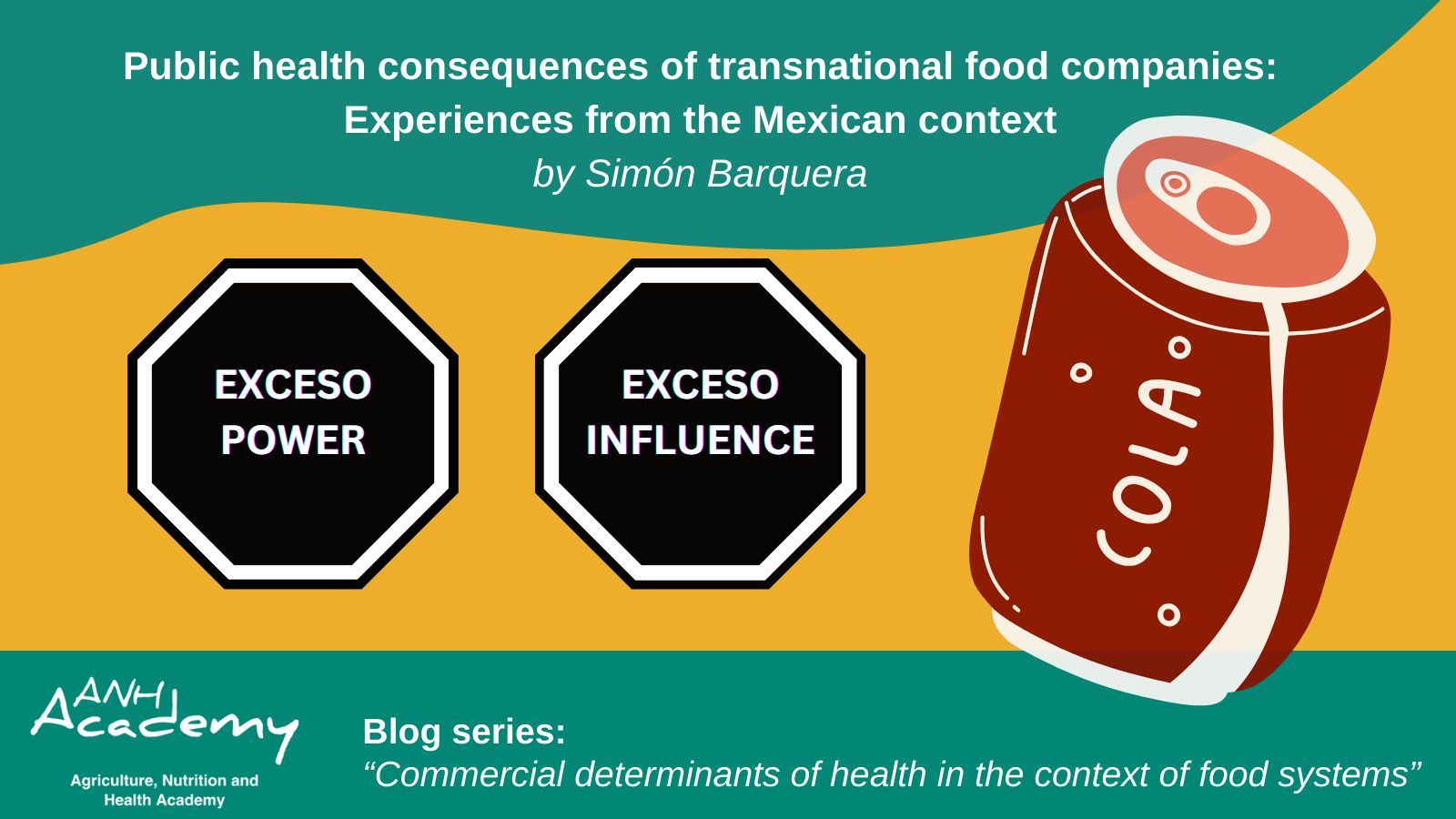It is mid-morning, the bell rings and it is time for a break at school. I am in a school in the city of Los Andes, Chile and see many children running towards the school store to buy a snack. About two hours later, another bell rings and now it is time for lunch. Most children at this school are participants in the school meals program. I see stressed teachers trying to control what’s happening in the school lunchroom, a long line to buy fried food at the school store and many trays almost full. The menu that day was fish. It is year 2012 and at that moment, I was a research assistant delivering nutrition education sessions to elementary schoolchildren. 2012 was an exciting year to be working in nutrition in Chile because a comprehensive food policy was being studied in the Chilean Senate. The aim of this policy was to address the obesity epidemic, particularly in children.
Experts agree that we need to transform the current food system to improve children’s and adolescents’ diets and make them nutritious, available, affordable, appealing and aspirational (AAAA). One key aspect of the food system is the food environment. The food environment, broadly defined, is everywhere people interact with food. Though many food choices are related to people’s preferences, the food environment also influences the way people obtain, prepare, and consume food. For children and adolescents, the school food environment plays an important role in shaping healthier behaviors because children spend a considerable part of their day at school, consuming one or several meals. Promoting healthier diets is quintessential for child and adolescent growth and development as well as to prevent obesity and non-communicable diseases such as diabetes, cardiovascular disease, and cancer.
Childhood obesity is an urgent concern for Chile, and it paints a troubling picture: 25.4% of school children (6-7 years old) live with obesity. Until 2012, many actions to promote healthier behaviors were mostly focused at the individual level. After several discussions between the Ministry of Health, politicians and the food industry, the Chilean Senate approved a comprehensive food policy in 2012. But it took another four years until the “Law of Food Labeling and Advertising” was finally implemented in June 2016. The aim of the law is to promote healthier food environments through a multifactorial, structural approach, where children are the intended primary beneficiaries. Through this law, Chile was the first country in the world to implement mandatory front-of-package (FOP) warning labels on foods and beverages that exceed cutoffs for calories, total added sugars, saturated fats, and sodium. In addition, the law bans all forms of marketing directed to children and includes school restrictions. Hence, the school environment became a relevant setting to study child and adolescent diets after the implementation of Chile’s law. The comprehensive set of actions implemented at the school level include: (i) foods and beverages with at least one FOP cannot be sold, promoted or marketed inside schools; (ii) foods and beverages with at least one FOP cannot be offered as in-kind donations of gifts; and (iii) foods and beverages with at least one FOP cannot be offered as part of the school meals program.

Figure 1. Front-of-pack (FOP) warning labels for packaged foods in Chile
Note: The labels “ALTO EN” describe if a food is “HIGH IN” sugars, saturated fats, sodium or calories.
The connection between the school food environment and youth diets has been well documented. However, in Chile, there were no evaluations on what happened with children’s and adolescents’ diets after the implementation of the aforementioned comprehensive set of actions at the school level. Therefore, we set out to analyze data on what children and adolescents ate at school before the law was implemented in 2016 and after its implementation in 2017, 2018 and 2019. We also looked at what happened with what children and adolescents ate at home and at other locations (e.g., fast-food restaurants, street food, cinema). We investigated changes in the percent of total energy of nutrients subject to the law: total sugars, saturated fats, and sodium. What did we find? For children, reductions in the percent of total energy from total sugars (between 4.5 and 11.8 percentage points), saturated fats (1.1 percentage points) and sodium (10.3 milligrams/100 kcal) consumed at school. For adolescents, a decrease in total sugars (5.3 percentage points) and saturated fats (1.5 percentage points) at school. In the home environment, we found a decrease in children’s sugar consumption only and no change in adolescents. But what happened at other locations? We found an increase in the consumption of nutrients subject to the law which gives us evidence of partial compensatory behavior among different settings.
There are still many unanswered questions such as what were the main food groups that lead to the decrease in the percent of total energy consumption of sugar, saturated fats, and sodium at school and what were those that contributed the increase at other locations. In addition, what was the effect of food reformulation? Were children and adolescents choosing healthier versions of packaged foods or were they choosing more fruits and vegetables?
The picture I painted at the beginning may be different today because children and adolescents should not be able to find foods with FOP or fried foods inside schools. However, they can go to the corner store near the school to buy what they can’t find at school. There is no doubt that the school environment gives an opportunity to improve health and nutritional well-being of children and adolescents. Though, complementary regulations in other environments that are relevant to children and adolescents such as fast-food restaurants and school neighborhoods are needed in order to influence overall child and adolescent diets.






